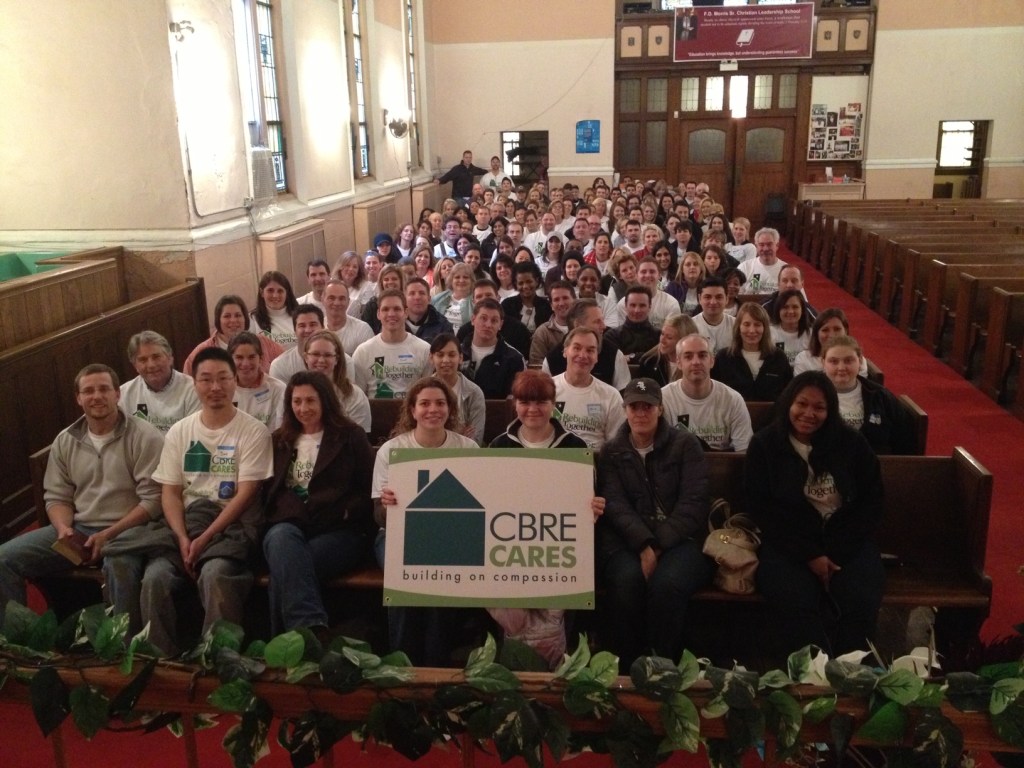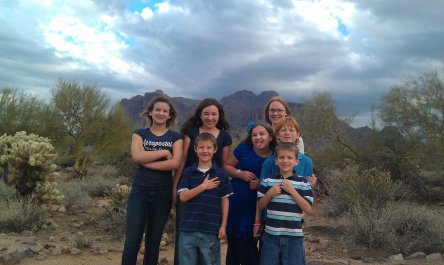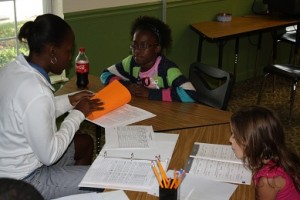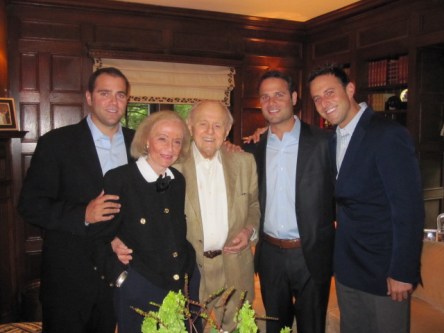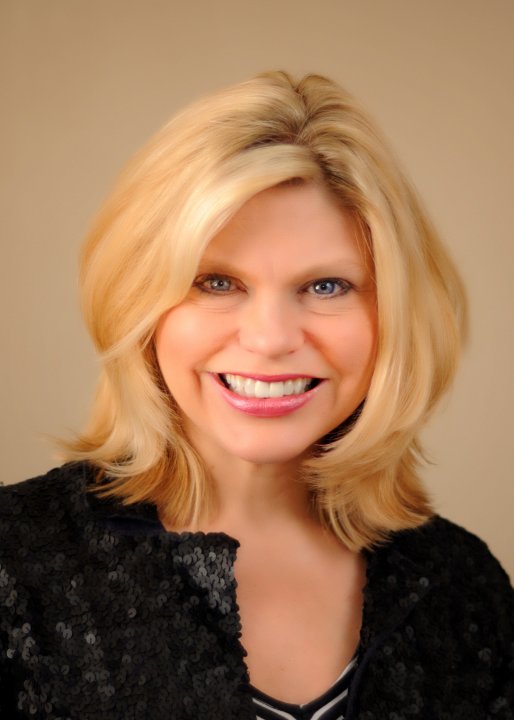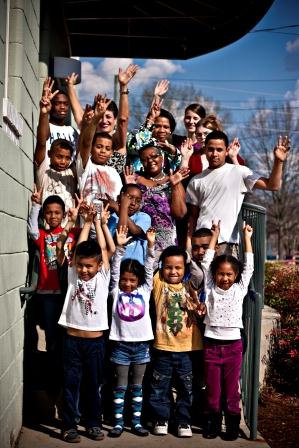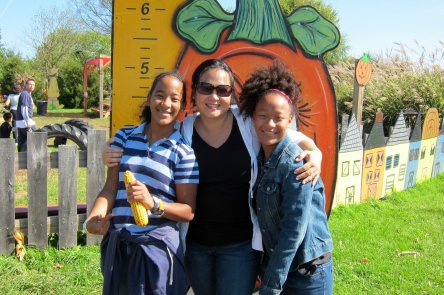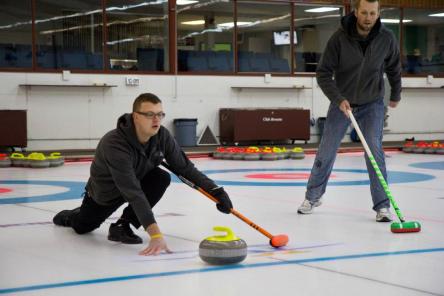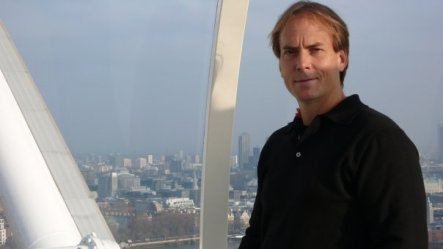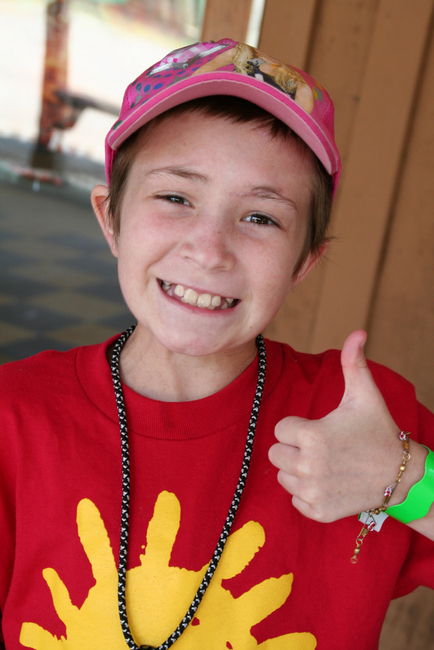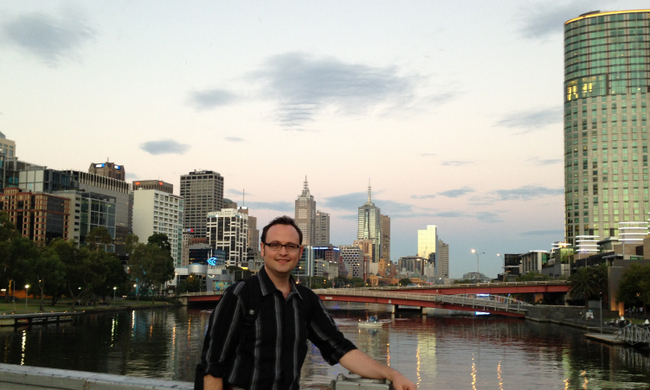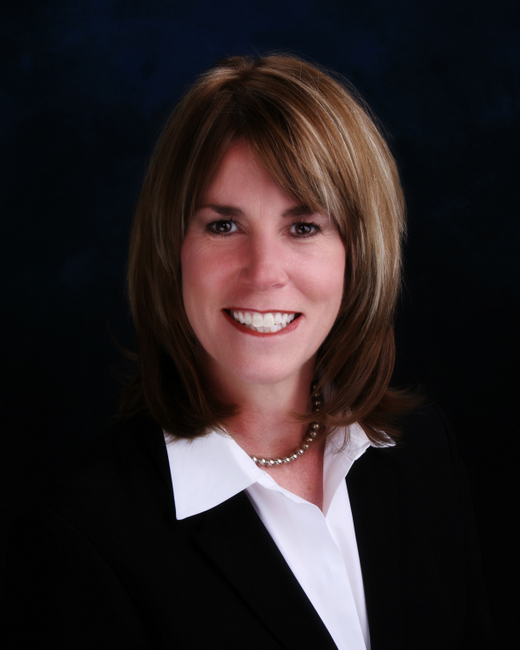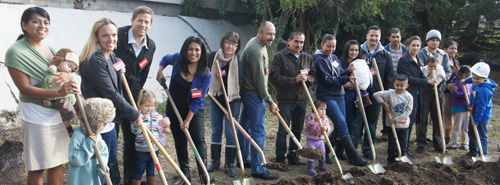Delivering a birthday cake to a child celebrating their special day at a homeless shelter seems like a simple act of goodwill. For the CBRE real estate professionals who make time for such volunteerism regularly, it is much more. “By the time I got to my truck I was crying and extremely shaken. I made that little boy’s day and let me tell you it was the most rewarding experience I have EVER had,” said Cathy Carone, a CBRE employee from Illinois. “It seems like such a small charity project, but they were so appreciative. Suddenly the time we take to pick up and deliver those cakes seemed like a whole lot more — we are touching individuals who really need a little joy in their lives,” said Jeanne Olcott, who works for CBRE in Arizona. Making a big difference in large and small ways is a hallmark of the CBRE Cares program, a nationally recognized effort by the commercial real estate firm that encompasses much more than just birthday cake delivery. Over the last three years, CBRE has rapidly grown its corporate philanthropy efforts nationwide with a new housing-focused effort. To date, over 4,000 employee volunteers have participated, contributing over 27,000 hours of service. And that’s just the beginning. “We wanted to give back to the community in a very real way,” said Kathleen Thompson, Director of the CBRE Foundation. Focusing attention on the communities where their people work and live made great sense for one of the world’s largest full service real estate companies. CBRE has approximately 160 offices in the U.S. and around 20,000 employees in the Americas. Designing a charity outreach effort that could effectively harness the hearts and hands of so many was no easy task. Employee energy is at the heart of the program, and giving back financially is also encouraged through CBRE’s Community Outreach program. Offices that raise funds for philanthropic causes – both from internal employee donations and external community effort – receive a partial match of their monies from the company. Then they decide as an office what local organizations they’d like to benefit with 75 percent of the funds raised. The other 25 percent is used for company-wide donations to causes like shelter housing and the environment. Investing Sweat Equity With this multi-faceted approach, the CBRE contributes both financially and through sweat equity to shelter services around the country. Employee participation in an annual volunteer work-service day, part of CBRE’s Shelter Program, has recently taken off. CBRE office teams, comprised of everyone from C-level executives to administrative staff, have completed 70 remodeling and building projects for underserved and at-risk populations since 2010. September and October are the company’s designated “Build Months,” and employees can use a paid day out of the office to participate in a local project. Shelter Program projects are coordinated in conjunction with two partner agencies – Rebuilding Together and HomeAid. Rebuilding Together completes renovations and repairs for low-income homeowners, often disabled adults, who are unable to afford to hire someone to help with maintenance needs. HomeAid builds facilities to help homeless Americans. One CBRE office, in Atlanta, completed builddays for both non-profits this year. “We knew that people were giving back to the community in their offices, that they were volunteering, but that they wanted to do more. We wanted to give them the opportunity to give more as a group with their colleagues, and have specific days where they could go out and give back to their community as colleagues together,” Thompson said. Calvin W. Frese Jr., CBRE CEO – Americas, wanted to create a day of service for CBRE employees and helped conceptualize much of the Shelter Program vision. Along with other executives, he’s worked alongside CBRE employees on Build Day projects. Recently, 280 CBRE volunteers spent the day refurbishing the Mt. Calvary Youth Center and Food Pantry on Chicago’s South Side. Vendors...
Island Harvest
Help after the hurricane
Nearly six months after Hurricane Sandy swept the east coast, thousands of Long Island residents struggle to pulls their lives out of the rubble. The dire need for assistance remains. Many aid organizations have withdrawn from the region, piling a daunting load upon the few organizations that remain. Island Harvest is one of the few nonprofits that have endured in Long Island, providing food assistance to those hardest hit by the storm. Nicole Kowaleski, Vice President of Development, recalls the spike in aid requests that followed in the wake of super storm Sandy, “In the past, we gave to 570 agencies that then helped about 300,000 people in need. After the hurricane, 90,000 additional people were in need; five months later, 30,000 of them are still displaced in addition to the population that we regularly serve.” Kowaleski maintains a level head about the extent of residents’ need. She estimates that relief efforts will continue for at least another 18 months. “We’re targeting people in the hardest hit part of Long Island, the south shore. We’re making sure that every single person has their needs met. We give out food, water, and snacks–not just to the residents but also to first responders at pop-up sites throughout the area,” she explains. “We let people know who we are, let them know that we are here for them and that we are a resource for them.” Rising to the occasion has posed a series of challenges for Island Harvest staff and volunteers. Several member agencies, which act as extensions of the organization, were disabled by the storm and remain inoperable. Island Harvest is helping member agencies get back on their feet. Once those agencies recover, they will be able to contribute more fully towards the cause. Standard...
Rachel Lindley
Yardi
Numerous personal transitions have sharpened Rachel Lindley’s ability to adapt to anything that life hurls her way. The Sales Executive for Affordable Housing has worn many hats at Yardi, relocated across the country, and is raising a large family while maintaining a positive disposition. Her key to success? Focusing on what matters, which has consistently boiled down to a high regard for the team she works with and the people that she works for. After leaving behind her life as a stay at home mom, Rachel landed a role as an administrative assistant for Classic. She soon transitioned into a support team member in the Atlanta office. It was a perfect match that maintained her interest even after the Yardi acquisition. “When I was in a support role with Classic, I really enjoyed working with people who needed my help and were grateful for it. It felt like I made a difference. In sales with Yardi, I help companies and individuals find out what’s best for them and their growth. I get to use my background in customer service and I love helping them.” Even as job descriptions change, keeping her eye on the needs of others helps Rachel transition with grace. Though she could not have foreseen herself as a Sales Executive in her youth, she loves where she has landed. “I’m naturally a bit introverted and a bit shy,” she shrugs. “It took a while to get used to talking to people and putting myself out there.” Being introverted does not mean that Rachel is a homebody. Her love of the outdoors has always played a huge role in fulfilling her sense of adventure. “I grew up hunting and fishing,” she admits, her voice instantly igniting. “I really enjoy hunting in the...
Sharing the Love
Effecting Community Affection
Have you ever thought about what it would take to get your residents to not just like, but love, where they live? Meet Peter Kageyama. He’s an expert on community engagement and the emotional power of place. That means that he has great ideas about how to make cities and spaces more interesting, create deeper personal connections between people and place, and understand our complicated relationships with where we live. Author of a book called “For the Love of Cities” and co-founder of the Creative Cities Summit, Kageyama travels the country as a consultant, facilitating conversations between city leaders and citizens that often result in fun, simple, clever community projects. The sorts of efforts he encourages are grassroots, don’t cost much money, don’t require building or event permits, and yet often leave lasting impacts. A native of Ohio and former attorney who found his real passion was a much more creative calling, Kageyama is a dynamic speaker and dedicated observer of unique urban details. Since his book came out, he has visited 50 cities around the country, where he listens to people talk about what makes their community an exceptional place to reside. “I get to see them the way the people who love them do, to look through the lens through which they see their city. It’s very much a blessing,” he said of his travels and consulting experiences. The types of projects that Kageyama sees as effective affection-builders aren’t the sorts of things that you might expect from a long term community plan or a visioning summit. Some of them might seem totally off the wall. One of the cities he’s played a role in helping is Muskegon, Michigan, where the Love Muskegon campaign has created a viral iconic symbol that can be spotted all over town, a new ritual in which people toast the sunset over Lake Michigan, and even random civic boosters in green bodysuits and masks who show up at community events (yes, really). “They don’t talk, they just want to make people smile and say ‘We love Muskegon’ and do something kind of cool – it’s genius,” Kageyama said of the masked green men. Other ideas include pop-up art, performance, retail and food carts, street chalking, painting colorful murals on boring buildings, temporary seating in vacant lots or unused parking lots, a creative slogan of affection for the city that could be printed on bumper stickers or t-shirts, and many more. The only limits to creativity are a communities’ collective imaginations – and willingness to pitch in to make something happen. “It turns out that there’s a pretty big gap between having an emotional connection to a place and doing something for the place. That’s one thing I emphasize in all the work that I do and all the cities that I go to – how you traverse that gap,” Kageyama said. For multifamily managers, that’s a reality that likely rings true. You may know that your residents love living in their hometown – and at your apartment community. Perhaps they tell you every time you see them around the complex or in the front office. But translating that love of their home to a Like for your Facebook page, positive review on Yelp or ApartmentRatings, or attendance at a resident mixer may still be difficult. Buying into a community-wide engagement effort can be one way to foster resident affection, both for your community and your city. Kageyama encourages multifamily developers and managers to participate in community visioning efforts, even without a pending development project. And if you are in the planning or construction process, engaging the community before lease-up is ongoing can be a great way to build goodwill and excitement about the forthcoming new apartments. “I’m trying to get people to maintain that level of excitement and engagement and enthusiasm in a project, right now, and for the foreseeable future. What...
Corporate Empathy
Aegis Living
At Aegis Living, corporate values are much more than pleasant words that conjure positive thoughts. The philosophy for Dwayne Clark’s Washington-based residential senior living company is rooted in poignant personal history, and creates a culture focused on happy employees and helping people. “There’s a type of person that wants to work at Aegis and fits the criteria we look for in our employees. They’re passionate about what they do, and they understand empathy,” said Jennifer Hall, Director of Marketing for Aegis Living. Empathy is at the heart of the Aegis experience. Company founder Clark absorbed its importance during his childhood. Raised by a single mother who worked hard to support herself and her son, Clark has written a book about his mom, My Mother, My Son, and speaks frequently of the lessons his upbringing contributed to his life and work. At the heart of those experiences is a story that motivated the start of Aegis Living’s Potato Soup Foundation, an internal non-profit benefiting employees going through crises or emergencies, in 2005. When Clark was a teenager, there came a time when his mother simply didn’t have the money to put food on the table. So she ‘borrowed’ a bag of potatoes from her workplace, brought them home and made them into soup, which she and Dwayne ate for a week. It was a week he never forgot, but it wasn’t the monotony of potato soup that made the biggest impact. Clark’s mother, Colleen Clark, urged him never to forget what the experience felt like. She told him: “And when you have employees, don’t ever forgot to be there for your employees and they will always be there for you.” In practice, the concept has expanded to Aegis employees who support each other just as...
Building Community
The Marquette Companies
For the founders of The Marquette Companies, building a successful community is about much more than construction followed by profitable management. It’s not just about building a place for people to live, but a place where residents can engage with their neighbors, participate in healthy activities, and learn and grow together. That’s the foundation of the model of the Institute for Community (IFC), which began in 1996 and provides on-site programming and true opportunity for connection that’s available to thousands of Marquette residents. “Our mission is building quality relationships where people live and work through the power of genuine community,” said Mike Vickery, Executive Director of the IFC. “The founders (of Marquette) had built beautiful places, and they really wanted to build places where people lived beautifully as well.” In practice, that meant putting together a place and a program that would foster social interaction, community connection, and enhance residents’ lives and well-being. The IFC Friendship Centre in the Romeoville, Ill. HighPoint community brings in 8,000 to 10,000 people per month, many of them children, for sports, classes, activities and other programming. The Friendship Center is a 27,000 square foot facility that’s available free of charge to community residents and also open to non-residents, who can use it for a fee. With a staff of just four full-time employees, 125 volunteers contribute weekly to help everything run smoothly. An annual Marquette Charity Golf Tournament raises around $100,000 each year for scholarships for low-income HighPoint youth. Vendors and equity partners get involved as sponsors and donors, and Marquette properties around the country pitch in as well. The scholarships ensure everyone is included in the activities and opportunities. Income from memberships and programming, as well as outside grant funding, covers the rest of the center’s operating...
Serving Seniors
Bloom Senior Living
There is both a touching family story and a caring resident focus in practice at the senior living residences operated by Yardi client Bloom Senior Living (f/k/a Bloomfield Senior Living), which operates senior care communities in Indiana, Ohio and South Carolina. Bloom’s parent company, Kandu Capital, LLC also owns independent senior residences in Southern California and Arizona, and has acquisitions pending in the Southeast. In the rapidly growing market for residential memory care services, the Bloom model is both personal and heartfelt. The approach may stem from the company’s history. Founder Richard Tischler, a hard-working family man who still comes to the office five days a week at age 98, built a nursing home business with the support of his late wife Ruth, who in her later life suffered from Alzheimer’s disease. Her illness, and the experience of finding a suitable living facility to meet her needs, had an immediate impact on the Bloom approach to care. With Richard’s two sons-in-law (Howard M. Dubin and Mitchell A. Kantor) and three grandsons (Bradley E. Dubin, Scott M. Kantor and Tony Kantor) involved in growing and efficiently operating the family’s seniors housing portfolio, the company strives for the highest quality care and a top-flight customer service experience. They want families and residents to find the type of residential experience, exceptional care and resulting peace of mind that they sought when Ruth Tischler became ill. She and Richard are considered the company’s “Chief Inspiration Officers,” a fitting title. “We went through the process of looking for (a care community) for her and seeing what was out there while we were doing our own search. We looked at it not just from the perspective of being an operator, but from being a family member. We stood in those...
Esther Bonardi
Joins Apartment All Stars
Esther Bonardi, Industry Principal for Yardi Marketing Solutions, has joined the Apartment All Stars team and will be sharing her wealth of experience on the multifamily industry on the All Stars’ nationwide tour circuit. The Apartment All Stars are a team of experts that provide impartial instructive programming to apartment associations across the nation. They are known for their inspired, energetic and motivational speaking skills, wealth of multifamily industry knowledge, and results-inducing best practice tips. “I am honored to be included in this group of industry experts. For years, our industry has looked to the All Stars to share the latest information, the most leading edge solutions, and the most effective strategies for marketing and managing apartments,” Esther said. “And of course, our industry also knows that along with great information, they are going to have a great time at an All Stars event. I’m very pleased that the All Stars counted me among those who could deliver this experience to their audiences. “ Esther will bring strong knowledge of multifamily marketing to her presentations on the All Star tour. “I’m all about digital marketing. I love marketing technology, including both the opportunities and the challenges that it presents. I will be bringing best practices in digital marketing to the All Stars events. A marketing ‘geek’ is the best kind of ‘geek,’ and I think All Star audiences will feel excited and empowered when they see how easy it is to make technology work to their benefit,” she said. Esther began her career in the multifamily industry in 1987 as a leasing professional, and she never looked back. Over the years, she has served some of the industry’s best and brightest multifamily firms, taking a career journey from on-site management to multi-sit e management, and...
Megan McCoy
Riverstone
Riverstone manages a portfolio of more than 700 communities and 170,000 apartment homes for leading institutions, pension funds, developers, and other major owners, with a combined asset value topping $17 billion. Located in more than 265 cities in 28 states across the nation, assets under management include high-rise, mid-rise, and garden-style communities. Recently, we had the chance to last Megan McCoy, Vice President of Management Systems at Riverstone, a few questions. Thanks for chatting with us, Megan! What attributes about the Riverstone residential experience help the company stand out? Riverstone Residential Group is the nation’s largest 100% third-party multifamily management firm. Our exclusive emphasis on third-party management means that we compete for clients, not with clients. As such, all aspects of our business model are client centered, and our dedicated client services group works to develop tailored solutions that meet clients’ unique needs, goals, and expectations. Our national strength, local expertise, proven processes, and technology-enabled systems allow us to successfully manage a wide variety of asset types, including conventional, affordable, receivership, student housing, military housing, senior housing, stabilized, lease-up, mixed-use, and newly constructed communities. Bolstered by an array of supportive core services and value-added ancillary services, Riverstone combines the strength, efficiencies, resources, and operational expertise of a national organization with outstanding local market knowledge. Our local experts work to proactively gather data allowing us to respond to changing conditions and drive optimum property performance in each and every market. Seamless transitions to Riverstone management help to prime communities for performance success. To that end, our dedicated property transitions group coordinates a precise management onboarding strategy that minimizes operational disruption and maximizes long-term performance for each new Riverstone community. Through its comprehensive oversight of all transition activities, the group ensures that best practices and...
Passage Home
Improving Lives
Passage Home assists the impoverished, the previously incarcerated, and recovery program participants on their path to self-sufficiency through stable housing and life skills training. The North Carolina-based organization faces formidable odds: with unemployment hovering around 35%, nearly 90,000 Wake County residents live in poverty with more than 1,100 facing homelessness. Many of those in need are single-parent households with incomes of less than $10,000. Undaunted, the nonprofit has come up with a plan that would not just mend the problems that the community faces, but rather eradicate the problems from their roots. “We believe in empowering people by giving a hand up, not a hand out,” says Karis Lovett Tompkins, Chief Development Officer for Passage Home. Since its inception in 1991, Passage Home has helped more than 1,000 families pursue autonomy through a series of targeted programing. The organization presents a holistic set of services that aim to empower and enlighten, thus stopping the cycle of poverty. Housing and support services, financial education, youth development, and neighborhood revitalization efforts pull together to create healthy families, healthy homes, and a healthy environment in which residents can thrive. “The ultimate goal is to have these families in a stable environment,” Karis explains. “Each family is paired with a case manager who can help them where they need it most: job training, parenting, financial literacy—creating and sticking to a budget and improving their credit. We provide a holistic approach to helping families become self-sufficient.” It is Passage Home’s emphasis on empowering marginalized residents that attracted Karis. The nonprofit furnished her with the career change that she yearned for right when she needed it. “I worked for 12 years selling clinical research software as the head of business development for an organization. It was fine but I needed...
Lauren Chung
Yardi
Lauren Chung pulls inspiration from multiple facets of her life to help clients find the proper solutions for their business needs. Everything from her background in economics to athletic training has equipped her with the skills needed to serve Yardi as a Senior Sales Executive. For Lauren, life seems to have come full circle in recent years. “My family emigrated from Korea when I was five. For the first five years or so in the US, we were living in affordable housing. It wasn’t until recently, when I began working in the industry, that I realized that we were living in affordable housing and how that had helped us. Everything has come full circle,” she says. “I’m truly able to see the benefit of having those sorts of programs that help people who are just coming to this country or getting on their feet for other reasons.” As a child, she had no idea that she would eventually find herself in a position to help families like her own. Lauren obtained her bachelor’s degree in economics at the University of Maryland before making her way towards a career in multifamily housing. It was a career path that fell right into place. “I began working in mutual funds but that was short lived. Next, I worked HR and office management for VisualHOMES. The company itself began changing direction, targeting multifamily about 15 years ago, so all of us headed that way.” She joined the Yardi family after the acquisition of VisualHOMES in 2010. “I would like to have joined sooner. I like what I do now and I really enjoy working with Yardi. But everything worked out well and I’m really happy here.” Lauren’s favorite part of the job is getting to know new people,...
Cory Hawkes
Point2
When it comes to pursuing the things he is passionate about, Cory Hawkes doesn’t cut any corners. Point2’s Manager of Customer Care wears his heart on his sleeve, whether he’s supporting his favorite Canadian Football League team, playing his favorite sport, or working with his top-notch team of customer care specialists. A Point2 employee since 2007, Cory worked his way up from customer care representative to manager of the department with some of the same skills that have made him one of Saskatoon’s top curlers. He’s dedicated, committed, patient and persistent. For our American readers who find curling to be a totally foreign concept, Cory describes the sport as similar to shuffleboard – but played on sheets of ice. “You’re shooting a rock, a 42-pound piece of granite, down a 100-plus foot sheet of ice and trying to get it to stop in the rings that are under the ice at the other end,” he explained. Sounds like a pleasant test of skill, but curling is in fact highly competitive, physically demanding, and very strategic. Curling is played by four-person teams, inspiring close bonding and camaraderie. An avid curler since age nine, Cory plays in three leagues during the winter months and teaches more novice curlers how to improve their skills. He’s on the ice daily, and at the time of our interview, his team was holding the first place spot in each of the three leagues. They’re past club champions, meaning they bested the top teams out of 16 leagues in Saskatoon, and have also competed strongly against other top curlers from Saskatchewan. He still has hope of taking his participation in the sport to a higher level. Curling was officially added to the sports contested at the Winter Olympic Games in 1998....
ATL Ronald McDonald House...
Expanding smiles, extending hope
As Atlanta Ronald McDonald House Charities (ARMHC) enters its second phase of expansion, Atlanta families can look forward to a brighter future in children’s health care. Yardi recently joined forces with ARMHC to provide quality care for Atlanta’s families in the greatest need. ARMHC specializes in making families feel at home during their toughest hours by providing low- and no-cost housing for those who would otherwise traverse great distances to the city’s hospitals. Children are able to receive the treatment that they need for illness and injury with their families nearby. Each year, Ronald McDonald House Charities equips more than 4.5 million families with the resources that they need to reside comfortably while their young ones undergo treatment at a nearby hospital. At each home, staff members and volunteers work hard to create an atmosphere that facilitates unity and rest, allowing parents to focus on their child’s recovery rather than the daily trails of household care. More than 42,000 families have had the opportunity to stay at the Ronald McDonald Houses of Atlanta. “These houses are an absolute lifeline,” explain Carrie Bowden, Marketing and Communications Director for ARMHC. “They are a stable place, a very loving place, that provides a lot of comfort while families are going through the toughest crises in their lives.” Both Houses are located in close proximity to state-of-the-art children’s hospitals. “The facilities provide food, safe and comfortable housing, laundry services, meals and transportation. It’s just tremendous to see the benefit that the Houses provide for families.” Two Ronald McDonald Houses call Atlanta home. The Peachtree-Dunwoody house was crafted to assist families that are undergoing rehabilitation at Children’s Healthcare of Atlanta Scottish Rite. Demand has grown in recent years, resulting in a need for more adequate housing. The Peachtree-Dunwoody House...
Finding Inspiration
Top Women in Real Estate
It’s inspiring to hear the details of a success story, and never more so than when the person had to fight their way to the top. Talk to a female executive in commercial real estate, and chances are you’ll walk away with more than a few such inspirations. Talk to 25 of them, and you’ll be overwhelmed with good ideas, advice and insights. And regardless of whether you’re male or female, you’ll want to put them to use. Needless to say, finishing up work on Commercial Property Executive’s March 2013 feature, Top Women in Real Estate, I had more new ideas than I knew what to do with. OK, true confessions, we didn’t talk to all 25—a few were so busy we never got them on the phone. But most made themselves available, and their stories provided a lesson in perseverance, ingenuity and dedication. While these traits might be expected of such a group, some less likely characteristics also emerged during the course of our interviews. Among them was what seemed an unusually prevalent (though not omnipresent) tendency toward self awareness, an ability to recognize and admit to strengths and weaknesses that doesn’t always survive the climb to the top rungs of the career ladder. Beyond the admission, it was evident in an expressed willingness to listen and communicate, as well as to identify and emphasize the best characteristics of their team members. With self awareness can come humility and even insecurity, and while that latter trait might not seem a natural fit for aggressive dealmakers, two of the most successful brokers in New York City, Mary Ann Tighe of CBRE Group Inc. and Tara Stacom of Cushman & Wakefield Inc., admitted to it—and illustrated how they put it to good use. Another top-ranked...
David LaGue
Yardi
They call him “Levity”. With his playful and competent manner, David LaGue is known for bringing fun and tranquility to Yardi Global Solutions clients and colleagues. He knows there is nothing clever about being unhappy, and watching him in the middle of his team, you see they’re a clever group; the nickname suits him perfectly. A former CSD manager based in Cluj-Napoca, Romania, David joined Yardi eight years ago as an account manager in Client Services at the company headquarters in Santa Barbara. Initially, his focus was the large mixed portfolio of residential and commercial clients. He next moved to Yardi’s military housing product as a team lead and later as manager. Having looked after teams in Santa Barbara, Atlanta and Pune, David was a natural fit for the leadership role when it came time to open a Client Services team in Romania to provide support for Yardi’s European commercial clients. “I was ready for a new challenge professionally; in addition I had a personal interest to experience living and working in another country. And given that I had the full support of the Santa Barbara and European leadership team, the decision was easy.” In just over two years, the team that started with eight support specialists now numbers 43 members and continues to grow. With a Bachelor’s Degree from St. Olaf College where he studied Liberal Arts and Mathematics, David has continued to expand his market knowledge since landing in Romania. Although the initial plan was for him to leave Transylvania after one year, the amount of success and two ancillary services (help desk and data guardian) kept him here for longer. His focus these days is on the needs of Yardi’s European clients, leadership and escalations support, and project management planning. With...
Camp Twin Lakes
20 years of helping kids
Since its humble beginnings in 1993, Camp Twin Lakes has touched the lives of more than 50,000 disabled and sick children. New ventures for this year, its 20th anniversary, ensure that number will continue to grow as camp staff, sponsors, and partners team up to reach more youth. This spring, the camp buzzes with activities, even as the dog days of summer draw near. Since 1993, Camp Twin Lakes has offered weekend and week-long camp excursions for young Georgians with disabilities and serious illnesses. Set against the forested backdrop of Winder, Rutledge, and Warm Springs, participants are encouraged to develop skills sets that will prepare them for a productive and promising future. Over 50 organizations, or camp partners, join forces to form Camp Twin Lakes. Each offers the camp’s participants a wide range of opportunities and activities that foster physical, mental, and social development. Each camp experience is customized for the personal needs of the child attending. Through camp activities, children are encourages to form and meet goals, build confidence, develop friendships and—of course—have loads of fun. “Kids walk away transformed, especially our campers who come in from the outside world where they feel so different from other kids,” said Audrey McMenamy, grant writer for Camp Twin Lakes. “They may be the only child in their class undergoing chemo therapy, or struggle with severe asthma. The camp sessions are arranged for kids with similar conditions so kids don’t feel different, isolated. Together they gain new skills and the walk away with great friendships. They get confidence from trying new things together and not being afraid.” Kathy Russell, Communications Manager, noted how quickly the camps help children break through perceived impossibilities. “Our campers face various challenges, and they face limitations on what they can accomplish...
Josh Bradshaw
BlackRock
Josh Bradshaw has a concise and articulate philosophy on technology, and it’s based primarily on his experience as a Yardi Database Administrator for BlackRock, the world’s largest asset manager. A longtime Yardi user, member of a commercial focus group that contributes heavily to the Global Solutions development process, and instigator of productive collaborations between Yardi users around the world, Bradshaw is a savvy technologist who understands that the potential for software to improve business processes is only limited by our imaginations. But he believes equally that simplicity is the key to great product design. “Yardi software is designed to make our lives easier. It’s not going to make you have less work to do, but it is going to make it so that we can accomplish more, we can do our work better and faster, and we can be more innovative and connected. We can walk around with an iPad or an iPhone and show apartments. Maybe in the future we’ll have some augmented reality with Yardi – wouldn’t that be fascinating?” Bradshaw asked during a recent interview. In other words, he’s passionately future-focused and constantly pushing for better products, which is what has made him a useful contributor to the Global Solutions teams’ client collaborative development process. During focus group meetings conducted at the bi-annual Yardi Advanced Solutions Conferences, Bradshaw and his peers are invited to share their ideas for improving the commercial product suite. One year, his idea was something he called “the fifth grade math report.” “For our commercial recoveries, we needed a report that would clearly show how all the calculations were being done for all of the tenants,” Bradshaw explained. During the focus group meeting, he described the report as needing to use terms, equations and summaries that someone in grade school would understand – a big challenge given the complexity involved in commercial recoveries. “I was not ashamed to say I just need something very simple,” he said, thinking also of other end users who needed to understand the information. In a few short months, Yardi developers turned around a release with an analytical report that accomplished his request. The report was just one example of a suggestion Bradshaw contributed that led to development action and product improvement – the ultimate goal of any collaborative feedback Yardi receives from clients. Collaboration is also the theme of online groups he’s facilitated with fellow Yardi clients. Starting with the San Francisco Bay Area Yardi Users Group when he was working at Spieker Companies, an owner-operated property management firm, Bradshaw saw the benefits of asking other Yardi users for help and reciprocating that help. Since moving to BlackRock, he’s established another online group that focuses on Yardi’s commercial product. “I needed the ability to phone a friend, and so that’s what I was doing,” he said of his Spieker days. “And when I came into the commercial end of things, I also wanted that ability. This is international, we have people all over the world, who are high level administrators who contribute development input.” Bradshaw is globally focused in his personal life as well. He and his family recently relocated to Melbourne, Australia, where they will live while he attends an MBA program at the Melbourne Business School. He received his undergraduate degree at San Jose State in California, and chose the high-quality Australian program due to the diverse global experience it offers. Reeling off a list of countries that his classmates hail from that sounded like the roll call list at the United Nations, he explained: “One of my objectives was to be positioned to work globally anywhere in the world, even if it’s back in the U.S., even if I start my own little company. You can go to school in the U.S., and take a class on international business, or you can come to Australia and skip the class.” Though he’s not sure...
Stephanie Brock
Riverstone
February is designated as National Apartment Careers Month, and while she is not officially affiliated with the NAA campaign, Riverstone Residential Group’s Stephanie Brock could very easily be a spokesperson for the property management field’s capacity to launch and cultivate a distinguished and life-changing career. Brock, who was recruited into the industry while working as a bagger at a grocery store and attending the University of Texas at Austin, is now division president, Central, at Riverstone. She oversees 160 communities in Colorado, Illinois, Kentucky, Louisiana, Michigan, Missouri, North Dakota, Oklahoma, and Texas. By the end of 2013, that community number will be higher. As the largest third-party multifamily management firm in the United States, Riverstone will be taking on new inventory this year. These new Riverstone communities, especially those in high-demand Central division markets like Chicago, Austin, Denver, Dallas, and St. Louis, have been in the development pipeline for the last 12 to 18 months. In a shift from previous development cycles, Brock told us that developers are now seeking the insight of property managers before making final decisions on floor plans, in-unit technology, and community amenities. The anticipation of prospects’ wishes speaks to the growing power of the renting consumer. “In the past, I don’t think that developers were looking to sort out these types of details so far in advance,” observed Brock. “Today, if developers don’t have in-house management, they proactively reach out to our local experts for expertise and guidance on their target market and what consumers are going to expect or want.” After being discovered in that Austin grocery store by a property manager whose groceries she carried out to her car, Brock took a job as a leasing consultant in Austin and later moved to a property management role...
BRIDGE Housing
Affordable - and transformative
BRIDGE Housing doesn’t just build affordable homes. The longtime affordable housing provider transforms communities. And over the next five years, San Francisco-based BRIDGE, which also has offices in Irvine and San Diego, plans a huge increase in lives touched and neighborhoods changed as it doubles in size. “BRIDGE has always been committed to production, and we remain committed to that. We’ve been thinking in a forward way. We want to use the diversified platform we have built to increase our mission, and we have the capacity to do it,” said BRIDGE CEO Cynthia Parker in a recent interview. In its recently released strategic plan, BRIDGE’s executives and board outline a compelling case for the power of one housing developer – in partner with dozens of other community and government organizations – to affect real progress. And you only have to look as far as some of the BRIDGE projects completed or in progress to see what they are talking about. In San Francisco, BRIDGE is leading the effort to Rebuild Potrero, an ambitious project that will replace over 600 units of public housing in the Potrero Terrace and Annex, add new affordable and market rate homes, and fuse a connection between the vast economic gap that looms between the public housing residents and their neighbors on affluent Potrero Hill. In Los Angeles, BRIDGE is a partner in the Housing Authority of the City of Los Angeles’ efforts to expand and redevelop Jordan Downs, a 700-unit public housing project in Watts. The new construction will replace the existing units, bring mixed-income housing to the area, and add needed retail, industrial and community resources. In San Diego, BRIDGE developers are in progress on Comm 22, a transit-oriented infill project that is transforming four acres in Logan...
Habitat for Humanity
Building Homes and Futures
Sometime in 2014, 12 low-income Santa Barbara families will be able to move into newly constructed homes at Canon Perdido and Milpas streets, structures that they own and built in part with their own sweat equity. The latest project from Habitat for Humanity of Southern Santa Barbara County, the Canon Perdido Homes are the non-profit’s largest construction effort to date, and will allow its residents to leave behind the sub-standard conditions they are currently living in. “This is our largest project to date. These homes will provide housing for 43 people, 20 of whom are children,” said Alex Ramstrum, Development Manager for Habitat for Humanity of Southern Santa Barbara County. The project broke ground in mid-December and completion is expected to take about 18 months. Most of the construction will be the work of volunteers and the future homeowners, who will work under the tutelage of a professional contractor foreman and expert craftsmen volunteers. Each adult must contribute 250 hours of labor time toward their future residence. A popular volunteer opportunity for hundreds of community members each year, Habitat needs people power not only to participate in construction projects, but to help staff its ReStore, a retail center for recycled building materials in Goleta, and to participate in “A Brush with Kindness”, which completes exterior maintenance projects for homeowners in need. Here are the income level maximums for Brush with Kindess recipients. Yardi has had several employee “build” days with Habitat. The largest group was a team that worked for a day swinging hammers on the San Pasqual project in 2010. Other groups have worked at the ReStore. Rob Teel , Yardi’s Senior Vice President of Global Solutions, serves on the organization’s Board of Directors. “For me, Habitat is the perfect charity to combine my work, local, and ethical interests. The idea of providing a home for a family not only builds hope for those individuals, but it has a major impact on the health and hope of the surrounding community,” Teel said. Opportunities to volunteer on the Canon Perdido construction project will commence in the spring after underground construction is complete and foundations are laid, Ramstrum said. Interested volunteers can register to donate their time at this link. Donations for the project are still being collected as part of the Building Homes, Building Hope campaign. The development includes 2 three-bedroom units, 8 two-bedroom units, and 2 one-bedrooms, one of which will be accessible to disabled persons. The units will range between 750 and 1,200 square feet each. To qualify for a home in the project, the selected families went through an intensive selection process that included interviews, visit to their current housing situation, and financial review to ensure they met the income criteria for Habitat homeowners. Selected families can make no more than 80 percent of the region’s median income, many make far less. Demonstrating the need for affordable housing in South Santa Barbara County, hundreds of people attended early meetings about the Canon Perdido project, and eventually the 12 families selected were chosen from 115 applications. In addition to contributing 250 hours of labor per person toward their homes, the families will pay off interest-free mortgages carried by Habitat for Humanity. Mortgage costs never exceed 35 percent of residents’ incomes. Yardi Systems has been a corporate supporter of the South Coast’s Habitat chapter since 2007, donating funds toward all three of the non-profit’s local housing projects. Previous Habitat developments are located on the Westside of Santa Barbara on San Pasqual Street and off of Upper State Street on Via Lucero. For the Canon Perdido project, Yardi’s contributions will pay for the doors and windows of the homes, which are designed to meet the environmental standards of Built Green Santa Barbara. Building methods and construction materials will create well-insulated structures that lead to utility savings for the homeowners. The goals is to achieve “net zero” energy usage by...

